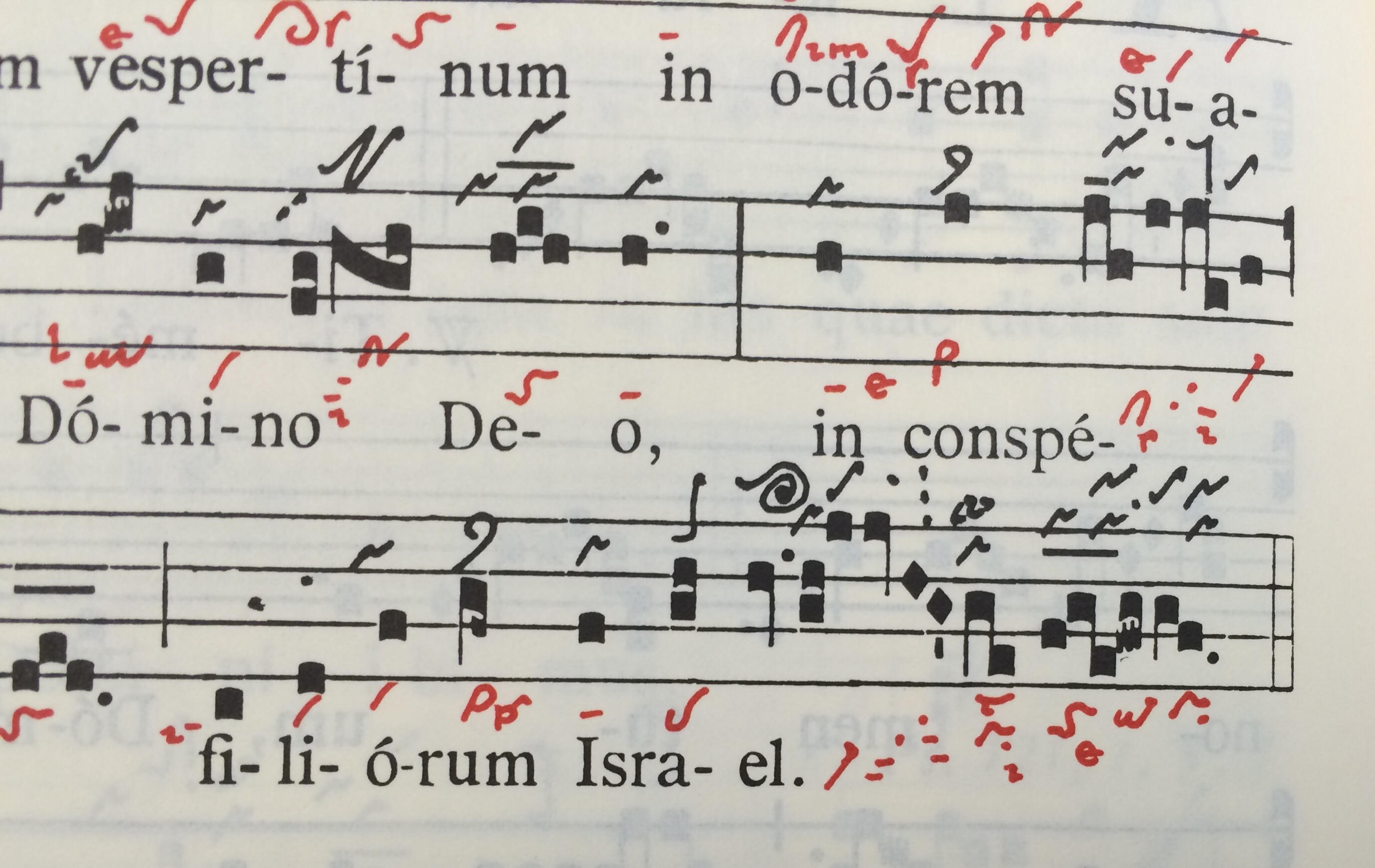Beauty in the Triplex
-
You don't find this in Gather:
Then again, neither do you find it in the Graduale Romanum.
This is from the Offertory of Hebdomada XXIV. Any suggestions as to the swirly's exact meaning? -
The image isn't showing up...
-
If you want to insert an image file that is on your computer, use the "attach a file" link below the text editing form.
If the image file is already out on the web somewhere, you can use the image *icon* in the editing form instead. -
I was working on getting it to show up, but now I see the attach a file button. Sorry for the delay.
-

Perhaps this will display better.
 Sanctificavit Moyses.jpeg2758 x 1741 - 710KThanked by 1M. Jackson Osborn
Sanctificavit Moyses.jpeg2758 x 1741 - 710KThanked by 1M. Jackson Osborn -
Move your hand like that in front of a choir and see what happens.
-
Well, we know how long to hold that note...
-
The only other instance of this particular neume that comes to mind is the offertory Ave Maria on the first syllable of the word "ventris." In both cases, the corresponding note in St. Gall is a virga with episema.
-
A lengthening that moves the piece forward, perhaps? (Best guess.)
-
It's a snail....indicating that you should move at the pace of a snail at this point.
Or, you should rotate your head in a circular motion whilst singing this note, thus creating an effect rather like that of a Leslie speaker.Thanked by 1JulieColl -
Shout "RTFM!" to your choir when they have this in front of them.
-
What about the dots? How are they conducted?
-
'...dots?... how... conducted?.'
With a gavel. -
The thing with the Paleography is that the signs are a mixture of chironomic gestures, copyists' shorthand, and just what happened to be the simplest way of making distinctions between duration and pitch.
What you have in Laon is simply two short notes of the same pitch followed by two quickly descending notes. The same in St. Gall: the tractulus ( _ as opposed to . ) denotes notes of lower pitch. There is nothing particularly chironomic about this form.
Welcome to the MusicaSacra Forum!
To participate in the discussions on Catholic church music, sign in or register as a forum member, The forum is a project of the Church Music Association of America.
Categories
- All Discussions21,153
- General Music Discussion8,235
- Job Openings204
- Management of Music Programs850
- Choral Matters533
- Church Documents and Rubrics526
- CMAA Notes303
- Events719
- For Newcomers: Read First26
- Sacred Polyphony547
- Hymnody872
- Gregorian Chant: General2,702
- ↳ Graduale Romanum and Liber Usualis368
- ↳ Graduale Simplex60
- ↳ Semiology63
- Vernacular Plainsong696
- Anglican Use and Anglican Chant68
- Organ, Other Instruments and Repertoire435
- New Composition/Works in Progress1,294
- Recordings234
- Music for Hispanic Ministry159
- Music Education: Children211
- Music Education: General222
- News Items245
- Positions Wanted2
- General Discussion: Catholicism739
- Amusements177
- General Discussion1,035
- Opinions119






